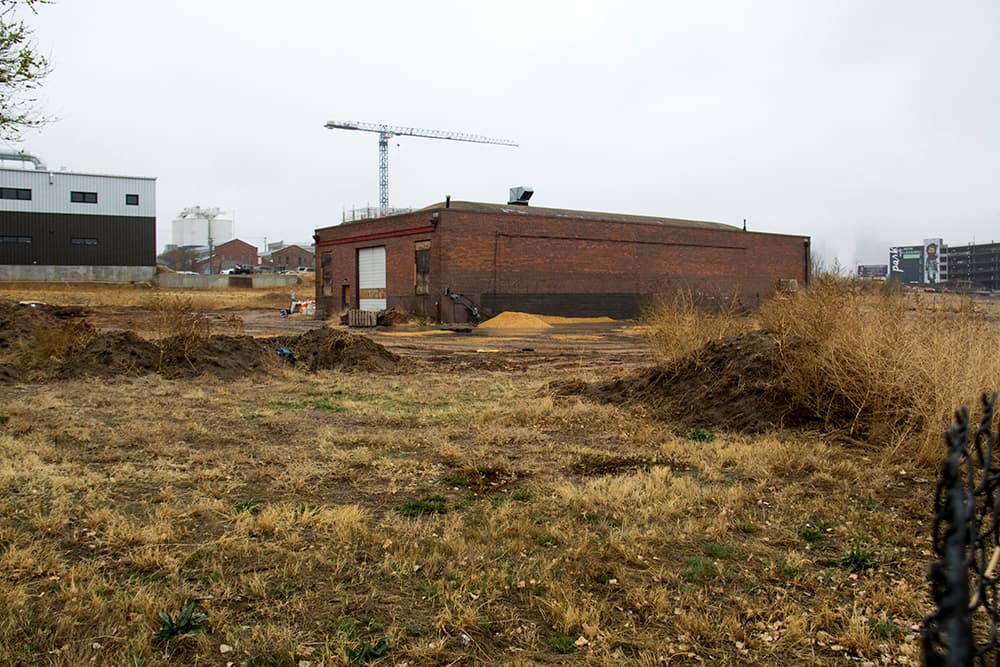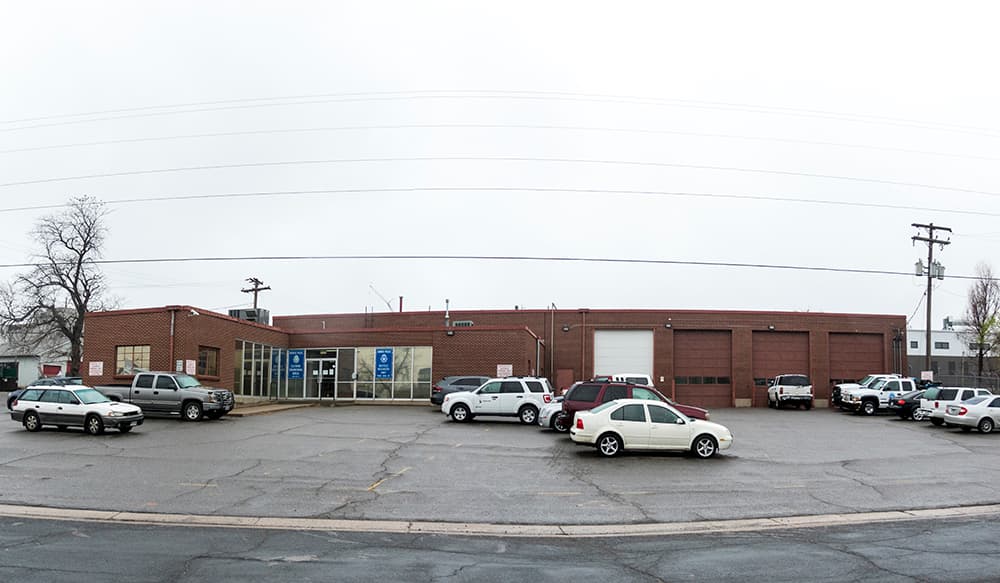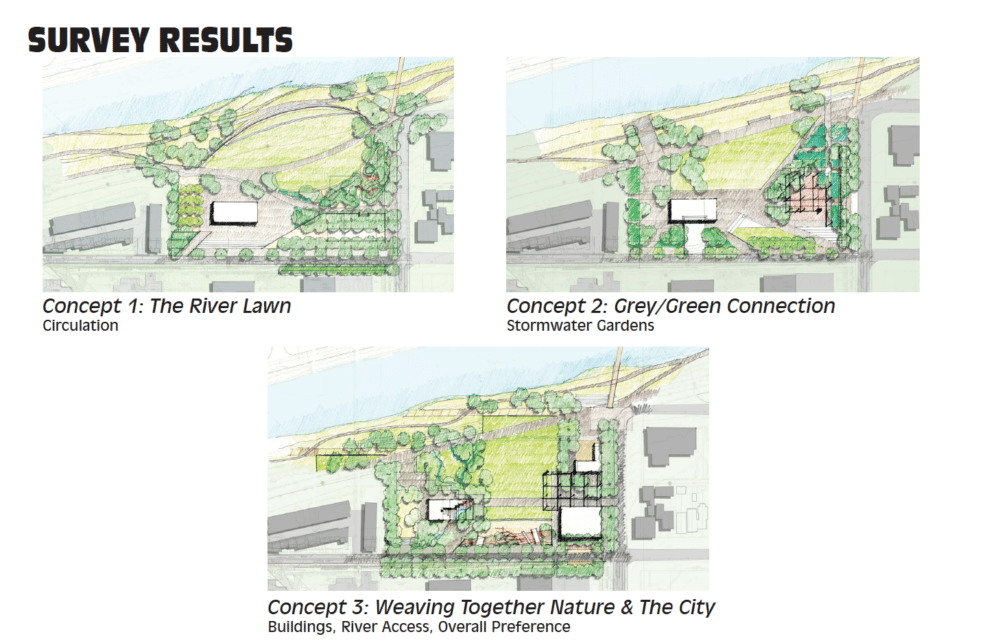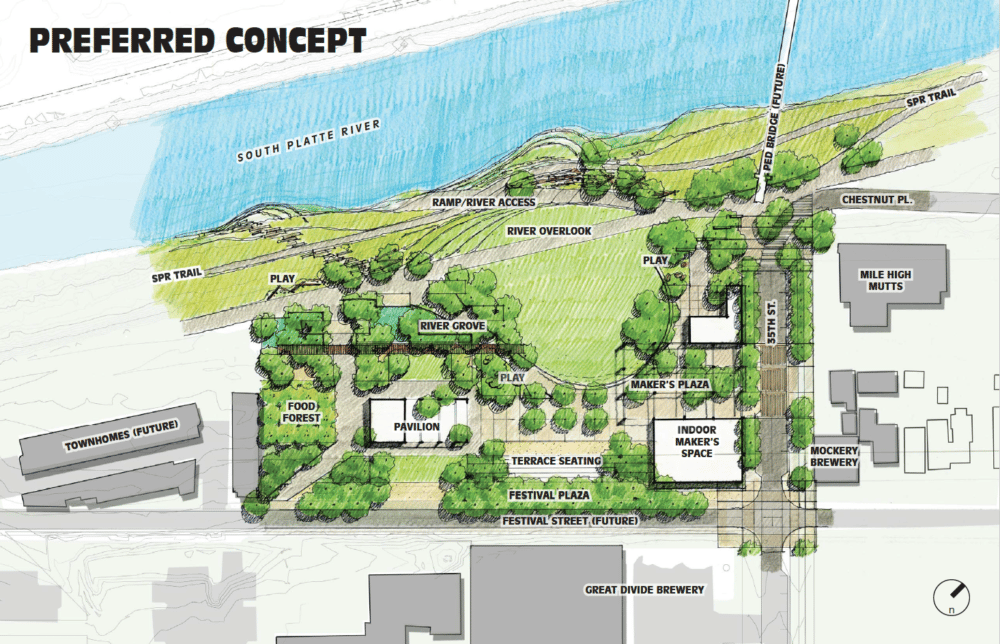
As plans for RiNo Park march slowly toward finality, there are still a few design questions to be answered, including this: What will happen to the buildings standing on that lot?
If RiNo Art District and the city can work out the finances, the answer is that they'll become permanent, affordable creative space.
In January, the RiNo Art District asked to buy and manage the two city-owned buildings that sit on the site of the future RiNo Park near 35th Street and Arkins Court. Ongoing talks between the district and city leave open the possibility of the art district paying for the redevelopment and management of the Denver Police Department's Electronic Engineering Building and a storage building, and leaving permanent ownership in the city's hands.
The district, including president Jamie Licko, is working with Denver Parks & Recreation and North Denver Cornerstone Collaborative (NDCC) on determining the future of the buildings. Talks are ongoing and no official plan has been approved or offered up yet.
"What I can say at this point is that the city has been doing an internal review about the feasibility of the buildings remaining … and what different uses might look like," Licko said. "They’re doing their due diligence as the city. Within the next month or so we may be able to move forward into a public engagement process to see how the neighborhood might like to see the buildings best utilized ... and also a conversation about a partnership with RiNo and what they might look like."

So before anything else can happen, the city needs to figure out if it can make the financial case to keep the two buildings. Once that's done -- and Licko said it should take a few weeks -- then they can get into details about uses.
There's been some broader discussion of how to use the structures already, as part of the early design process and the current feasibility study and in the planning for RiNo Promenade, a mile-long park along the South Platte River.

NDCC Deputy Director Todd Wenskoski said they've considered a pavilion and office space, among other things.
"When we went through the initial planning and design, we had three scenarios we presented to the public," he said. "The one they preferred was keeping one building and pieces of the EEB Building."
Currently, the EEB Building -- the one on the corner of 35th and Arkins -- is where the Denver Police Department houses its bicycle recovery unit. The Interstate Building, which sits roughly in the center of the future park, has parks equipment in it.
"That building on 35th and Arkins, it was actually built in three different segments. The idea is that the middle segment of that would be deconstructed to expose the steel frame, and that would serve as an entry point to the park," Licko said.

Gordon Robertson, director of park planning, design and construction for Denver Parks & Recreation, said they're looking into the costs of both remodeling and maintaining the two buildings, as well as the market in the neighborhood for event space, office space and maker space.
"Our push was always that we need to let the community here -- and particularly the artist community -- be able to comment on what the need is," Licko said. "How might these buildings not only serve RiNo but the surrounding neighborhoods? We’ve bounced around ideas about maker spaces, artist studio space, tech space, performance space for musicians. I think with all the buildings there’s an opportunity to do an interesting mix of all of that."

If and when the city does decide to keep the two buildings, the next step will be to get into the design process and start holding community meetings to learn more about what the neighborhood wants and needs. From there, they'll start to identify funding and get a management structure in place.
RiNo Art District "from day one has been open to a fundraising capital campaign just to get them open," Licko said, and to creating a partnership with the city to manage the buildings.
"There's still lots of work to do," she added, "but at least we’re moving forward."













